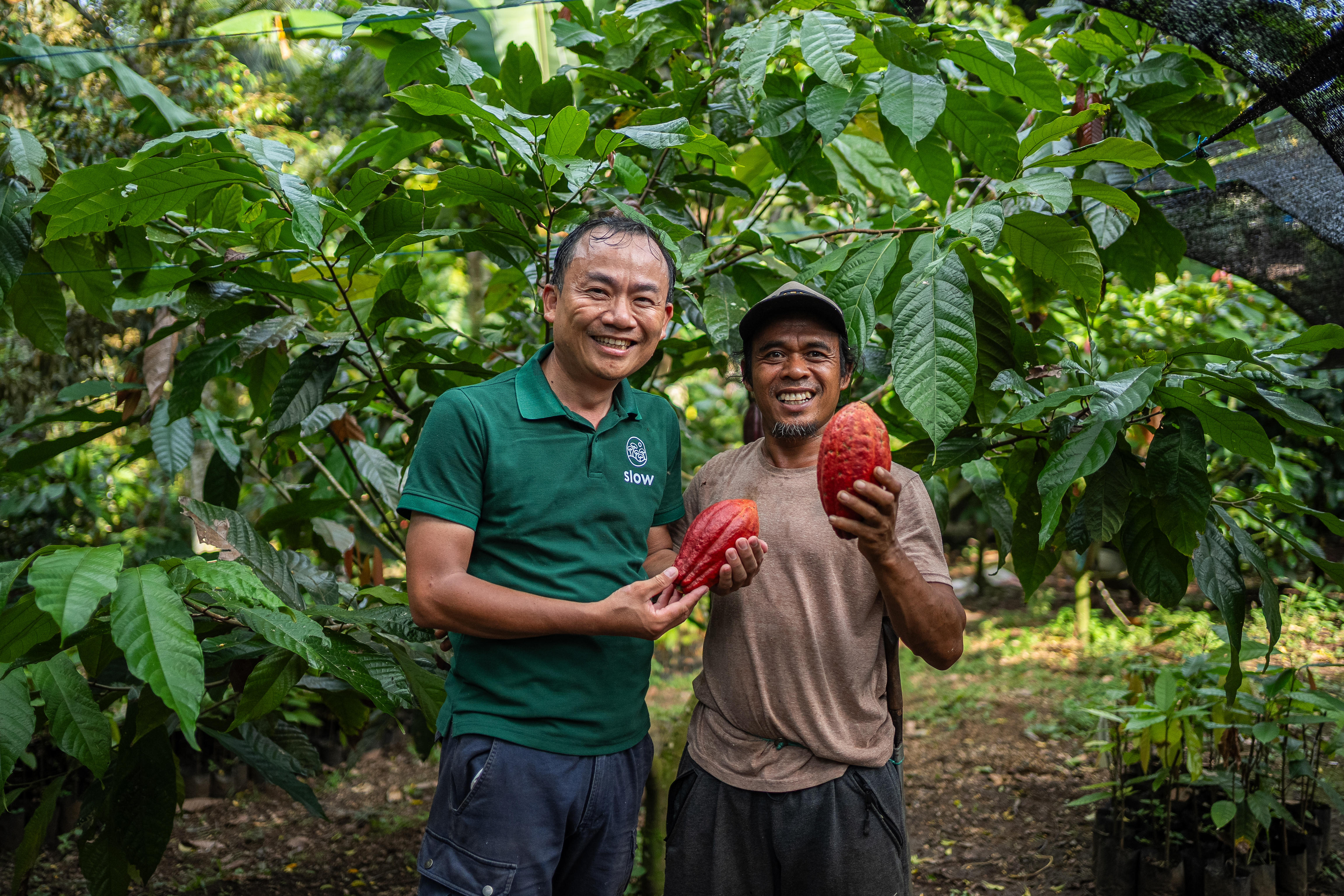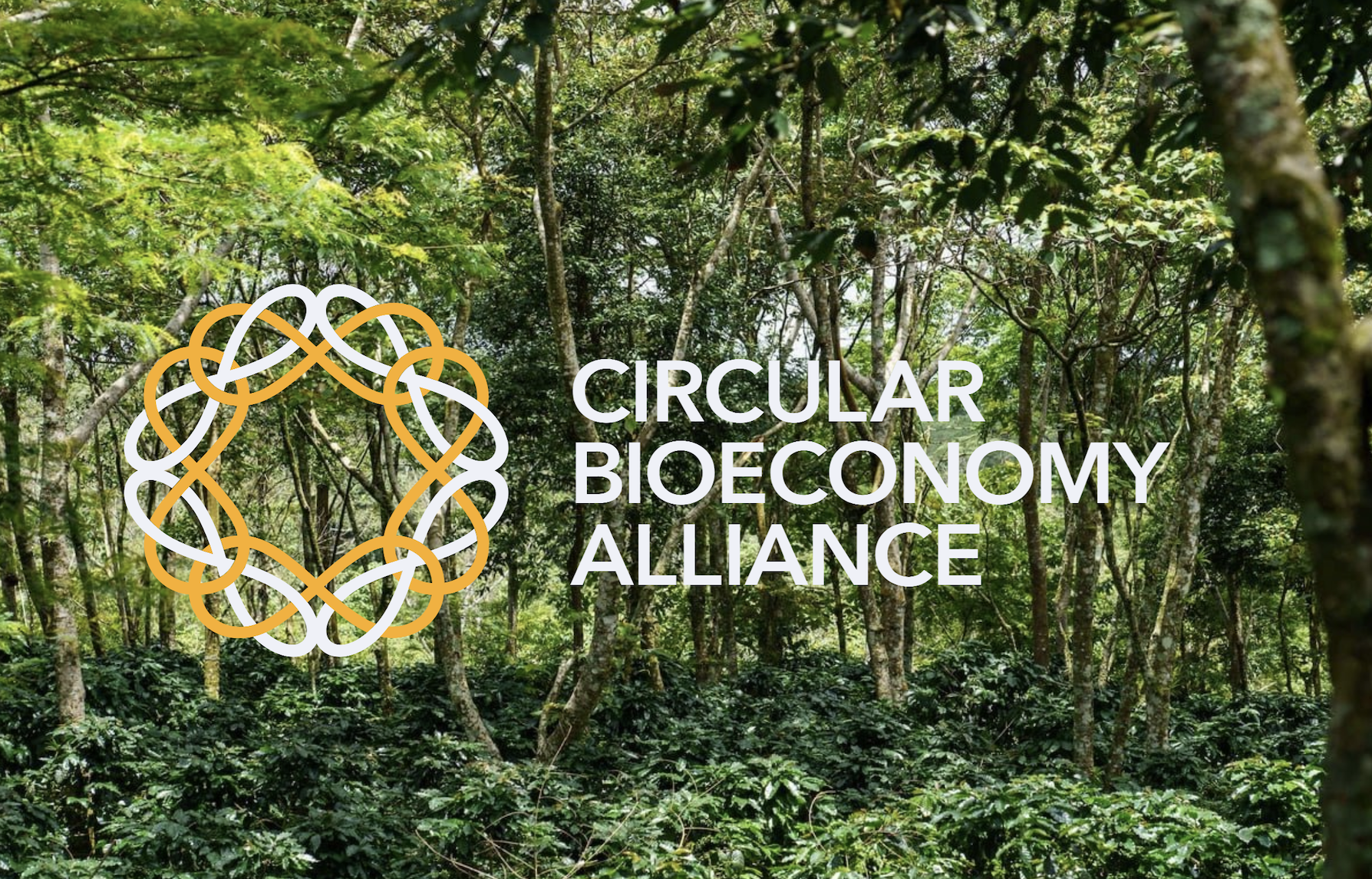Earth Day: Four ways to reduce your coffee and chocolate footprint
Earth Day reminds us that change doesn't have to wait for sweeping policy or perfect systems. Often, it starts with something as simple—and as...
Dec 6, 2024 - 2 min read
_Lakkhao%20farm-%20Maersk%20farm3-1.jpg?width=1200&height=800&name=Impect%20Team%20(Tree%20inventory)_Lakkhao%20farm-%20Maersk%20farm3-1.jpg)
Our team conducting a tree census in the buffer zone. © Slow/Saosavanh Ketmala
By 2050, nearly half of the world's coffee-growing regions could become too hot and dry for cultivation, forcing farmers to move to higher altitudes. While this shift may offer short-term relief, it often comes at the expense of native forests—critical to climate stability and biodiversity.
At Slow, we believe there's a better way: integrating buffer zones into coffee farms to protect ecosystems and ensure that land and crops remain resilient in the face of a changing climate.
.png?width=1650&height=1115&name=public___gfr_2020-11_GFR-45E-replaced-coffee-indicator-deforestation-linked-agriculture%20(1).png)
Global coffee demand has driven widespread deforestation. Between 2001 and 2015, nearly 2 million hectares of forest were cleared for coffee plantations, according to the World Resources Institute. This deforestation not only destroys vital habitats but also reduces the planet's ability to sequester carbon, speeding up climate change.
In Laos, where our farms and those of the smallholder farmers we work with are located, we're tackling this issue head-on. Our farms lie next to the 778-hectare Thongwai community natural forest and the 93,000-hectare Dong Hua Sao National Protection Area. Together, we are part of a larger conservation initiative focused on protecting buffer zones—vital green spaces that separate farmland from the surrounding ecosystems. These zones are crucial for preserving biodiversity, improving water quality and strengthening the resilience of farming systems.
A key aspect of our conservation strategy is the regular tree census we conduct to monitor the carbon removal potential of these buffer zones. By tracking tree growth and survival, we can assess how much carbon these areas are sequestering, which plays a vital role in mitigating climate change. The data we collect ensures that the buffer zones are not only helping to store carbon but are also protecting wildlife habitats.
_Nampot_Buffer_Zone_12%20(1)-1.jpg?width=1200&height=800&name=Impect%20Team%20(Tree%20inventory)_Nampot_Buffer_Zone_12%20(1)-1.jpg)
Measuring tree diameter as part of our ongoing effort to monitor the health and growth of buffer zones. © Slow/Saosavanh Ketmala
Nguyen Dinh Dai, Slow's Head of Impact, underscores the significance:
"The buffer zones within Slow's farm are home to birds, insects and wildlife that support the ecosystem. They also help offset over 500,000 tonnes of CO2 annually, as shown in our tree inventories."
Buffer zones are protected green spaces that separate farmland from surrounding ecosystems. They offer a multitude of benefits:
These zones act as natural barriers that help balance agricultural production with environmental conservation.
_Nampot_Buffer_Zone_15.jpg?width=2000&name=Impect%20Team%20(Tree%20inventory)_Nampot_Buffer_Zone_15.jpg)
Through regular tree inventories, we monitor the health of these buffer zones, tracking biomass growth and ensuring that conservation efforts continue to support both carbon removal and biodiversity. It's an ongoing process that ensures long-term sustainability—for the coffee we grow and for the planet.

Earth Day reminds us that change doesn't have to wait for sweeping policy or perfect systems. Often, it starts with something as simple—and as...

Big news from Slow. African Coffee Roasters is now part of the Slow family. And this isn’t just an acquisition—it’s a major step forward in how...

A few years ago, coffee and chocolate were just products. But at Slow, we’re changing the story. We’re not just selling beans and cocoa, we’re...